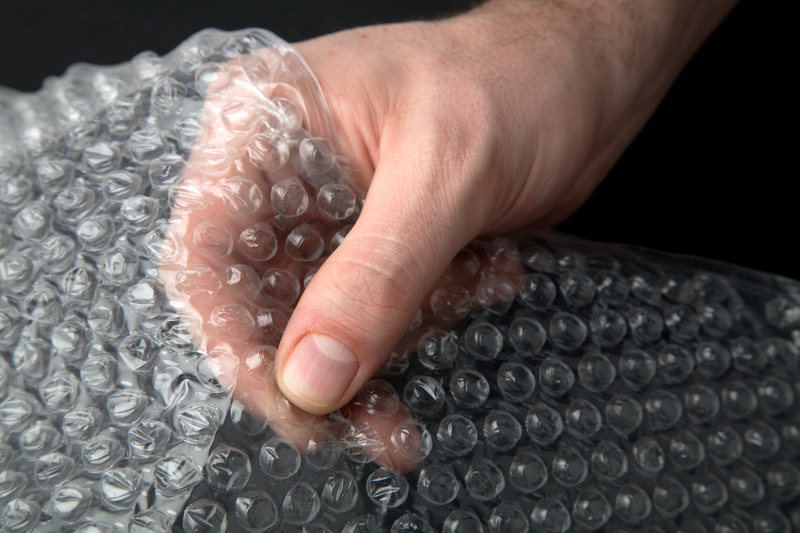How Mishaps Happen During DIY Piano Moves and How to Prevent Them
Moving a piano is no small task. These beautifully crafted instruments are not only heavy and bulky but also incredibly delicate. Many enthusiasts, hoping to save costs, attempt DIY piano moves, often underestimating the complexity involved. Unfortunately, this can lead to costly mishaps, damaging the piano, property, or even causing serious injury. In this comprehensive guide, we'll explore how mishaps occur during do-it-yourself piano relocations and offer practical preventive measures to ensure your cherished instrument arrives safely at its new home.

Why DIY Piano Moves are Risky
The main keyword here is risk. Attempting to move a piano without professional help increases the odds of accidents, damage, and injury. Pianos are unique in their weight distribution, fragility, and awkward size. Common mishaps that happen during DIY piano moving include:
- Scratched or dented walls and flooring
- Broken piano legs, pedals, or casters
- Internal damage to strings or keys from improper lifting
- Personal injuries such as back strain or crushed fingers
- Stuck pianos in stairwells, doorways, or elevators
But how do these mishaps occur in the first place during a seemingly straightforward DIY piano relocation? Let's break it down.
Common Ways Mishaps Happen During DIY Piano Moves
1. Underestimating the Piano's Weight and Size
Most upright pianos weigh between 300 and 500 lbs, while baby grands can exceed 600 lbs. Amateur movers often misjudge the center of gravity and total mass, making it hard to control the instrument. Attempting to lift a piano without adequate manpower or equipment can quickly lead to dangerous slips and drops.
2. Lack of Proper Equipment
Professional movers use specific tools such as dolly carts, moving straps, and piano boards. DIY piano moves often happen with makeshift tools--standard dollies, blankets, or even bare hands. This amateur approach increases the risk of scratching floors, breaking piano legs, or toppling the instrument altogether.
3. Improper Lifting Techniques
Back and hand injuries are common because movers bend from their backs instead of their knees, lift in awkward positions, or try to move too much weight without enough help. A piano's uneven distribution can cause it to tilt or tip unexpectedly.
4. Ignoring the Layout and Obstacles
Unlike a couch, a piano can't always pivot easily through doorways, corners, or up stairs. False assumptions about space, hidden obstacles (like thresholds and handrails), or mismeasured clearances can leave movers stuck mid-move, risking scratches, collisions, or damage to the instrument and property.
5. Skipping Safety Precautions
Seasoned movers prepare by communicating, planning the route, and keeping children and pets out of the way. DIY attempts often lack this level of caution. Rushing, poor communication, and lack of protective gear (like gloves or steel-toed shoes) contribute to inevitable mishaps.
The Most Costly Mishaps in DIY Piano Moving
Piano Damage
- Scratches and Surface Damage: Rubbing the instrument against door frames, walls, or rough surfaces.
- Internal Harm: Sudden jolts or improper angling can misalign the delicate internal components, leading to costly repairs.
- Broken Legs or Pedals: Lifting the piano by its legs or pedals, rather than its base, can snap these components.
Property Damage
- Gouged Floors: Dragging rather than lifting a piano often pits or scars hardwood, tile, or carpet.
- Dented Walls and Trim: The size and weight make accidental bumps almost inevitable without planning and protection.
Personal Injuries
- Back and Muscle Strain: Attempting to deadlift or overexert leads to pulled muscles or worse.
- Crushed Fingers or Toes: Gripping in the wrong places or letting go suddenly can result in trapped digits.
- Falls: Losing control on steps or slopes can have disastrous results for both people and the instrument.
Pro Tips: How to Prevent Mishaps During DIY Piano Relocations
1. Plan Every Step in Advance
- Measure Doorways and Hallways: Compare your piano's dimensions against all doorways, stairwells, and elevators along the route. Account for turns and obstacles.
- Create a Detailed Map: Map out the entire route from room to moving truck, noting tight spots and problem areas. Mark out protective padding areas in advance.
2. Gather Specialized Equipment
- Piano Dollies: Use a dolly designed to handle heavy, uneven loads. Ordinary hand trucks may tip or break.
- Moving Straps: Straps distribute the weight and help you maneuver without direct lifting.
- Piano Boards: Grand pianos should be placed on a padded piano board for safe movement.
- Furniture Blankets: Wrap all surfaces to prevent scratches and dings.
- Packing Tape and Stretch Wrap: Secure blankets and loose components.
- Gloves and Protective Footwear: Prevents pinches and injuries if the piano slips.
3. Assemble a Team
- Enlist a Minimum of 3-4 Strong, Able Helpers: Never attempt to move a piano with fewer, especially up or down stairs.
- Ensure Communication: Assign roles (lead, backup, spotter), and agree on signals or commands before starting.
4. Use the Right Lifting Techniques
- Lift with Your Legs, Not Your Back: Keep your back straight and lift from a squat, not a bend.
- Keep the Piano Upright: Tilting a piano can harm internal mechanisms and unbalance your team.
- Do Not Lift by Weak Points: Avoid pedals, legs, or lid edges--always lift from the base frame.
- Take Small Steps and Move Slowly: Rushing can cause mistakes and injuries.
5. Prepare the Environment
- Protect Floors and Walls: Lay runners or cardboard to shield high-traffic areas.
- Remove Hazards: Clear away rugs, cords, lamps, or any item that could trip movers.
- Secure Pets and Children: Keep them in separate rooms during the move.
6. Know When to Hire Professionals
- If your piano must be moved down stairs, over uneven ground, or into a high-rise building, professional piano movers are a must.
- Sensitive or antique pianos should always be handled by experts to avoid irreversible damage.
Expert Tips for Moving Specific Types of Pianos
Moving Upright Pianos
- Lock or Remove the Keyboard Cover: Prevents sliding and protects keys.
- Secure the Lid and Pedals: Tape down or wrap these to minimize movement and damage.
- Use Two Sides of Lifting: Have helpers on both left and right to balance the weight.
Moving Grand and Baby Grand Pianos
- Detach the Legs: Grand pianos require leg removal; the instrument then rests on its flat side, secured on a padded board.
- Wrap and Protect: Each leg should be individually wrapped and the pedals cushioned with moving blankets.
- Transport Flat: Never stand a grand piano upright in a truck.
What to Do If a Mishap Occurs
Even with careful planning, accidents can happen. Here's what to do:
- If the Piano Is Dropped: Check for internal and external damage. Do not attempt to play the instrument--consult a piano technician.
- If Someone Is Injured: Stop immediately and assess the severity. Call emergency services if necessary.
- If Property Is Damaged: Document damages for insurance purposes, and consider professional repair services.
- For Minor Scratches: Use wood touch-up markers or consult a furniture restorer.
Cost Comparison: DIY Piano Move vs. Professional Piano Movers
| DIY Move | Professional Movers |
|---|---|
|
|
Cutting corners on professional services might seem like a savings, but the costs of a mishap--damage, injury, and time--often outweigh the up-front expense.

Frequently Asked Questions About DIY Piano Moves and Mishaps
Can I Move a Piano by Myself?
No. Even a small upright requires two to four strong people and proper equipment. Attempting to move a piano solo is unsafe and strongly discouraged.
How Should I Protect My Piano During a Move?
Always wrap your piano with thick moving blankets or special piano covers, secured with tape or stretch wrap. Protect the corners and remove loose components before moving.
What Is the Biggest Mistake DIY Movers Make?
Underestimating the piano's weight and fragility, and assuming it's just like moving standard furniture. Specialized handling is essential for safe relocation.
Are There Insurance Options for DIY Piano Moves?
Most moving truck rental companies offer basic cargo coverage, but it often excludes high-value instruments. It's best to check your homeowners' policy or obtain a rider for your piano prior to your move.
Conclusion: Should You Attempt a DIY Piano Move?
While DIY projects can be rewarding, moving a piano yourself is filled with potential pitfalls. Mishaps during DIY piano moves are common, resulting from lack of preparation, poor equipment, and underestimating the task's complexity. Risking your instrument, your property, and personal safety is seldom worth the minor savings. If circumstances necessitate a do-it-yourself piano relocation, follow the outlined guidelines with utmost care, use proper tools, and always enlist help. However, for most, the smart, cost-effective, and ultimately safer solution is to hire professional piano movers with experience and the right equipment.
Your piano is an investment in music, art, and family heritage--move it wisely to ensure it fills your home with music for generations to come.



